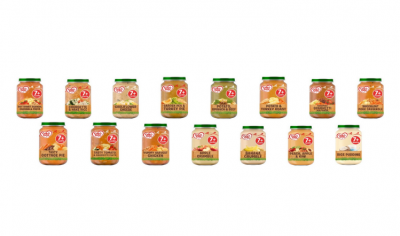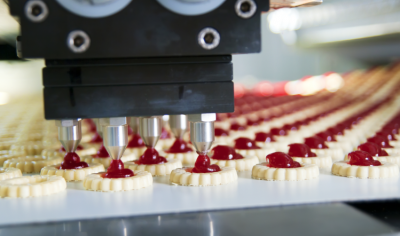Second of a two-part interview on take-up of software and automated processes
Half of food firms operate paper-based planning processes

"A lot of these food companies have good products they have managed to sell for a big enough price so they make good margins on it," explained Stephens. "Businesses that are making good margins, the fact they employ five people to do planning, they think well, why change it? This year we have taken on a couple of sizeable businesses that turn over £100m plus and all their planning is manual."
Stephens reckoned that on average, in his experience, half of all food and drink processors still handled substantial paper trails as part of the way they ran their operations. "I think meat particularly is bad, but I would say all of them. One of the difficulties with meat, particularly if you’re doing kill, bone, retail pack, is it’s quite complicated. We have a software module which [covers the whole process]. Nobody else has that and I suspect the reason why people plan manually is because they have never come across a solution for it."
The challenge for primary meat processors was to avoid waste costs by selling every part of an animal, he said. "When you’re a further processor, if you’ve got an order for 100 bellies, you buy 100 bellies. When you’re a vertically-integrated business, once you kill an animal, you’ve got to sell all of it, so while you may have orders for your retail pack business, all the retailers buy fillet steak, sirloin steaks, rump steaks, they’ll buy lots of mince. There’s a whole load of pieces of meat you’ve got to sell and of course the retailers will promote this and promote that.
Vertically-integrated businesses
"Most vertically-integrated businesses have to sell between 20% and 40% of the animal to manufacturers. At the point you do boning and trimming, if you don’t produce the right spec, you won’t sell it, so the ability to understand which pieces are going to be left over, then working out the best return and giving sales enough chance to sell that before you’ve produced it gives them a step forward.
At the moment, what happens is they’ll do all the boning, some guy’s got a spreadsheet, there’s primal in the chiller, they’ll take what they need for the retail pack and then they’ll be scratching their head thinking, ‘what shall I do with the rest of it’. Then they’ll try to sell it. The chances are you’re already ticking through the shelf-life on it, then they’ll find out actually, if we’d done a PAD topside as opposed to a fat-on topside, we could have got a good price for that, but it’s too late now.
SI supplied software that enabled those choices by offering full visibility of order flow. "The ability to be able to see and react in advance is a quantum leap forward for meat processing, that bit of software."
Case study: Falfish
Unlike many other fish processors, Falfish not only purchases fish from the auctions, it also guarantees to purchase whole catches from skippers of individual boats. The catches are processed on the same day and either sent straight to customers or immediately processed for frozen customers. As the amount and type of seafood caught each day varies, Falfish needs to operate with great flexibility, to ensure all its orders from key customers in the UK and Europe are fulfilled quickly and efficiently.
The company uses SI’s technology for full end-to-end stock and traceability control, allowing it to automatically report back information required by fisheries departments, while having a real-time view of available stock. This information is also used in the automation of trawler payments, supporting swift payments for each skipper.
"We have worked with the business for several years to take a very deliberate modular approach to integration, building in customisations to the modules themselves, so no bespoke programming is required," said Stephens.
“For example, when we introduced the stock and order modules, we developed a batch barcode approach to traceability. Each batch is assigned a unique code with all data captured assigned to this code. This code and data follow the product throughout the processing line, together with the individual species barcode information. It also informs label generation details, when the produce is packed and dispatched, or when put into cold storage. This delivers a fully automated and auditable traceability system, giving complete mass balance on all products and packaging, which allows Falfish to focus on other tasks.”
Most recently SI had enabled Falfish to digitalise its quality assurance (QA) process, with the adoption of handheld devices to perform and log all QA tasks and deliver live data straight to its technical managers. By integrating with stock control, the enhanced QA process supported the overall delivery of quality processed seafood to consumers, while supporting the wider sustainability of the sector as a whole, SI claimed.
Users also had much more control over margins per product on that basis, said Stephens. One sizeable business was running a software system alongside an inefficient spreadsheet-based approach, meaning it had little idea how much profit it was making per customer or per line, he added. "We can say: you have produced that product, you might have gone through five processes with trimming and boning, et cetera, but by the time you get to there, this is what your meat cost is, this is what your labour cost is, this is what your packaging cost is. Therefore, if you sell it for anything less than that, you’re going to lose money on it."
The company's software solutions also offered full traceability of the provenance of the meat, its kill date, pack date, use-by date and which batch it was from. That was dependent on farmers using the same systems, but that was driven by their customers, which could drop them and go to another supplier if they did not do so, Stephens explained.
SI's tools also enabled users to prove compliance and traceability to auditors, who could interrogate systems in minutes. Previously, they would have had to take days wading through spreadsheets.
Recall management was also made easier, as SI's quality assurance modules cut down or completely eliminated costly recalls, the company claimed.
- Brexit-related pressures were driving growth in interest in software and automation systems to increase traceability, response time and efficiency, Stephens said in the first part of this interview.
- Systems Integration is a key sponsor of the Food Manufacture Excellence Awards, which are being presented at a lavish dinner in London on 13 February 2020. The shortlist of candidates has been decided. For more information on how you can sponsor the awards, visit the official website. To book a table, click here.

















